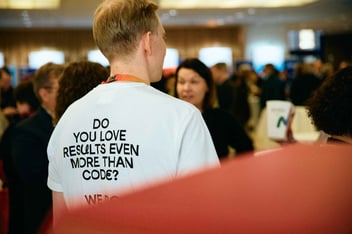Over 1.2 million people in Finland (approximately 22% of the population) are classified as disabled. This includes individuals with visual and hearing impairments, memory and reading disorders, and cognitive or neurological conditions such as ADHD, autism spectrum disorders, and dementia. As Finland's population continues to age, hundreds of thousands of elderly individuals are increasingly reliant on digital services in their everyday lives. That’s why digital accessibility in Finland is no longer optional, it's essential.
Web accessibility is about more than just code
Web accessibility means ensuring that websites and mobile applications are easy to use for as many people as possible. It's a core principle of inclusive digital design, where the needs of diverse users are considered from the very beginning. Accessibility helps ensure that everyone — from young adults to seniors, from neurotypical to neurodivergent — can navigate and benefit from digital services independently.
But how many organizations truly design their services with all user groups in mind? Unfortunately, very few. And that’s a problem. But also an opportunity. Millions of Finns could be unintentionally excluded if accessible services aren’t prioritized. At the same time, designing for inclusion is a business opportunity. Digital accessibility is not just a technical checkbox. It’s a quality indicator and a real competitive edge. It can determine whether someone uses your service or walks away.
What inclusive digital design really looks like
Too often, accessibility is misunderstood. It’s not just about making a website work on a mobile device. True inclusive design means ensuring the site can be used without a mouse, for example with a keyboard or assistive technologies like screen readers. It means using readable fonts, providing strong color contrasts, and writing descriptive alt texts for images. Forms should be intuitive, labels clear, and instructions simple.
The best results come from involving users early. People with disabilities and older adults are experts by experience, and their feedback is invaluable. Want to know how accessible your online store really is? Try navigating it with a screen reader. Is the menu logical? Is the checkout process smooth? Does the whole experience feel safe and inclusive?
Accessibility is good business
Investing in digital accessibility in Finland is like building a great app. It’s a foundation for an excellent user experience. And a great user experience drives growth. Accessible services don’t exclude; they welcome. Think of it this way: if your physical store had a concrete block at the entrance, many customers wouldn’t even walk in. The same principle applies to digital: if a website isn’t navigable with a keyboard, you’re turning users away.
Plus, accessible design benefits everyone, not just people with permanent disabilities. Subtitles help in noisy environments. Clear navigation helps when you're tired. Accessibility is customer-centered design that adapts to different people and different situations.
The EU Accessibility Act is coming
Starting in June 2025, the EU Accessibility Act will make digital accessibility a legal requirement across the EU, including Finland. The transition period runs until 2030, but companies that start now will have a clear advantage. Additionally, Finland is already bound by the UN Convention on the Rights of Persons with Disabilities, which mandates the promotion of accessibility in all areas of life.
This article was originally published in Finnish in Talouselämä.

Anssi Kuutti


